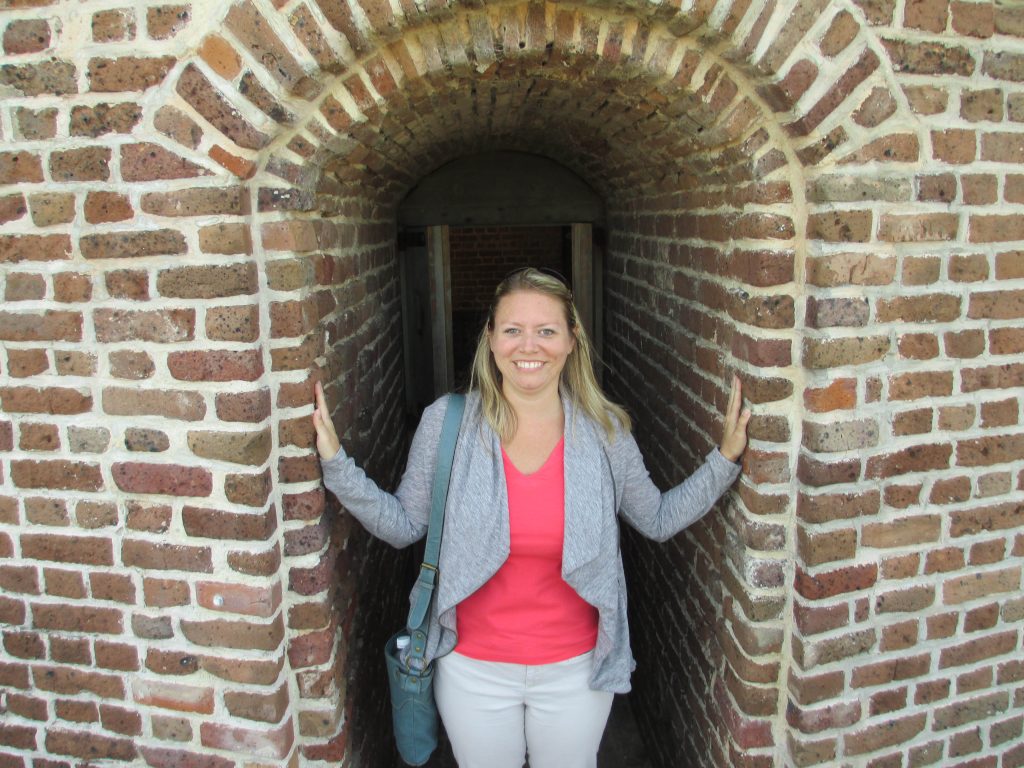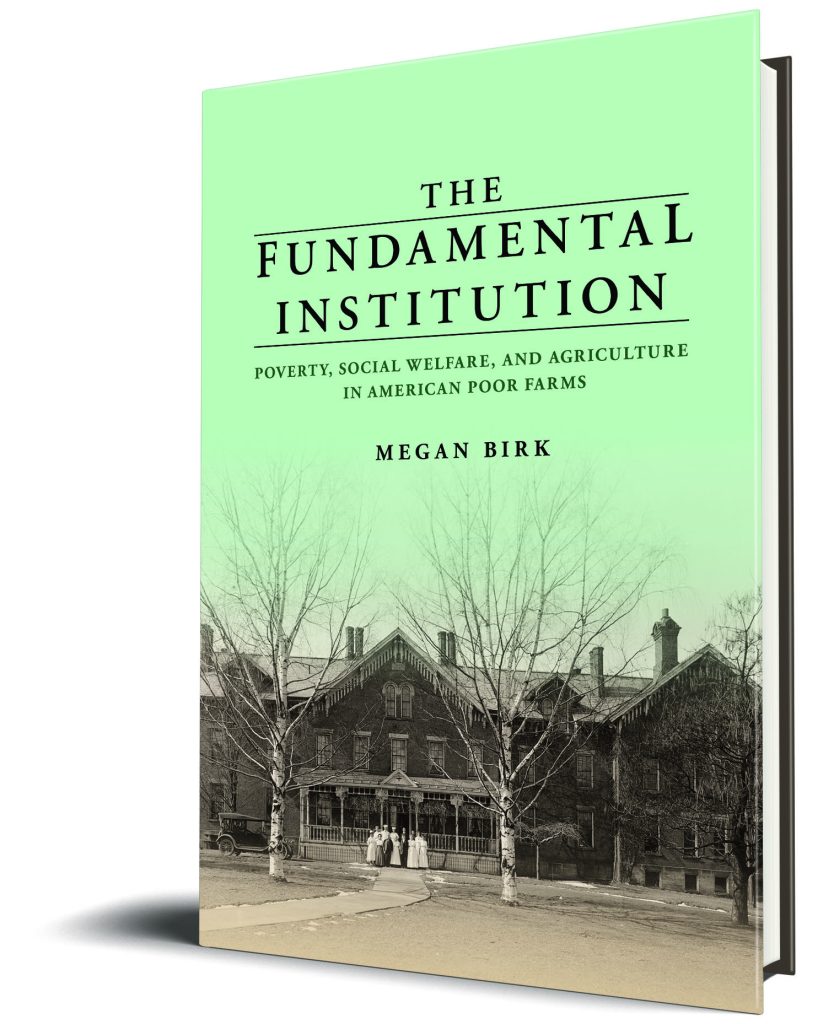Megan Birk, author of The Fundamental Institution: Poverty, Social Welfare, and Agriculture in American Poor Farms, answers questions on her scholarly influences, discoveries, and reader takeaways from her book.
Q: Why did you decide to write this book?
I have been working with poor farm records in various ways for more than fifteen years because many of the children I wrote about in Fostering on the Farm came through poor farms into placement homes. Each time I mentioned poor farms at conferences or in publications, people wanted to know more about them. People of a certain age (which I won’t try to estimate here) often remember their local poor farm, or relatives referring to such a place. They are such diverse places, which is both exciting and challenging. What became clear to me is that the people who lived and worked in poor farms deserved to have a history told from their perspective (or as close as possible). The policy and politics of the institutions are interesting, but the institutions were fascinating to me for the roles they played as homes, farms, and safety nets, sometimes of last resort. They were everywhere, and yet occupy very little historic space both physically or scholarly.
Q: Who were your biggest influences?
My entire career has been scaffolded by scholars demonstrating the profound importance of rural social history, a field that was solidified by historians including Mary Neth, Sally McMurry, David Danbom, and Pamela Riney-Kehrberg, among so many others. I am fortunate to be able to have their work on which to build. Michael Katz’s well-known In the Shadow of the Poorhouse is the first scholarship I read that positioned poor farms in a larger context of social welfare history, a field that continues to develop and intersect with others such as disability studies. The work done about earlier, localized social welfare by historians including Ruth Wallis Herndon give an excellent point of comparison on which to discuss the history of poor farms in their late 19th century form.
Q: What is the most interesting discovery you made while researching and writing your book?
Probably finding the first-hand accounts from a variety of individuals who lived or worked at poor farms. First, there were the daily diaries from Wisconsin, which provided an intimate look behind the scenes at the difficult job of managing a poor farm. The two men who kept that journal, E.P. Titus and J.S. Meyers, were conscientious and skilled people who created the best possible environment for their residents, at a time when many poor farms were under rightful criticism for being dreadful. I had been working on the ledgers of specific counties for some time when I found the obscure autobiography of Edward Sweeney. He never says specifically where in Ohio he lived, and I had a lot of records from the state. When I finally found him in census records it was a gift because I had massive amounts of material from that very same poor farm, including images that had been preserved by local historians. For many reasons, poor farm residents did not leave many first-hand accounts behind: literacy and shame being two. So, to have two pieces of that puzzle come together was amazing. These sources help paint a richer, more nuanced image of poor farm life.
Q: What myths do you hope your book will dispel or what do you hope your book will help readers unlearn?

Poor farm mythology runs deep. They were scary places for many people – a threat you leveled against difficult elderly relatives or wasteful children, or haunted shells of buildings. I can’t minimize that reputation for all poor farms, because frankly some of them were sad, lonely places that stigmatized residents. But, what may be surprising for readers of The Fundamental Institution is that they were not all this way. Some were run for decades by kind, able people who treated the residents with grace and kindness, and made a home for those who had no other. More practically, I think that people will be very surprised that there was hardly any emphasis on residents working in order to “earn” their stay. In fact, poor farm superintendents specifically discussed how silly it was to expect sick and worn-down people to staff a farm. Residents working on the farm were likely those categorized as having mental health problems or developmental disabilities. Most poor farms had paid employees who did a majority of the difficult physical labor. People who could do such work did not go to the poor farm for long because it represented a loss of independence that was truly unconscionable for most.
Q: What is the most important idea you hope readers will take away from your book?
I sincerely hope that people reconsider the idea of social welfare and why it has always been necessary to provide some type of option for those people who cannot, for various reasons, self-support. While there is no answer for future success provided through examining poor farms, they open a window on to a time when that care was given locally and the personalized nature of relief, while exclusionary to some, created a different understanding of who needed help, for how long, and why. Poor farms were not a perfect solution to poverty and need, but it is meaningful to see what was possible when people accepted a responsibility for neighbors and strangers, and good, ethical people helped facilitate that societal obligation of care. I think of it in terms of “what do we owe to each other?” and how each generation grapples with that question. I also hope that people who are interested and able will help support their own local historical societies, many of whom work to preserve records and physical sites of poor farms. I’m working on a website to help create a new catalog of local poor farm information, a clearinghouse of sorts, since the one that existed for many years is now gone.
Q: What do you like to read/watch/or listen to for fun?
I like true crime podcasts, and right now I’ve been enjoying episodes of The Opportunist from Cast Media. I love taking a break with fiction when I can. I’ve really liked historian Deb Harkness’ fiction because it’s fun to see a professional historian branch out into a different genre. Recently I’ve been gifted a couple of book club memberships from some bookstores here in Texas – the Nowhere Bookshop has a Fantastic Strangelings fiction club that is great, and BookPeople in Austin does some wonderful lists for authors of color and first-time authors, among many others. I also have BritBox and Acorn subscriptions – so that gives away a deep love of British history and British mystery shows. I had a lot of episodes of Midsomer Murders on in the background while working on The Fundamental Institution.

